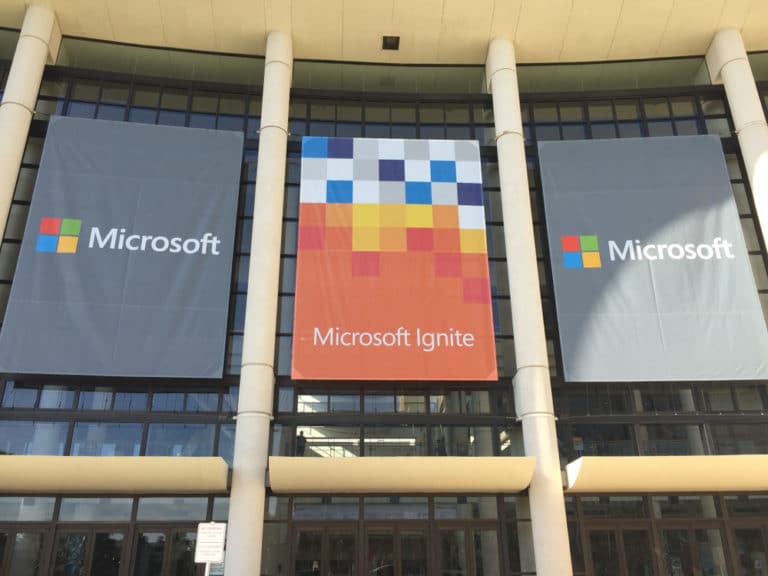Microsoft has used its Ignite developer conference to highlight Azure as a platform to harness the power of data. Enterprises produce a lot of data, Microsoft sees, and with the right solutions, you can take advantage of this data. Cloud platform Azure will get updates to help businesses harness the power of data.
Traditionally, Ignite comes with a series of updates to Microsoft’s business applications. This year, despite a virtual edition, that is also the case. CRM and ERP applications Dynamics 365 and productivity tool Microsoft 365, for example, will get new features, which we will also discuss in more detail. Azure, however, is receiving so much attention that we would like to take a closer look at the cloud platform.
Microsoft sees that organizations are living in an uncertain world because of the pandemic. It requires new levels of agility. You stimulate this by capitalizing on new insights. Data analytics lead to these insights, and a cloud platform is very suitable for this, given the volume and performance. And so, Microsoft is stepping up its existing efforts.
Optimizing data analytics
One of the services at the heart of the data platform Azure is Synapse Analytics. This already existing service brings together data integration, data warehousing and big data analytics. Unifying these traditional products creates a unified platform for IT professionals for tasks such as data ingestion, exploration, preparation and management. Bringing these steps of the data process together leads to faster and better results for applications like machine learning and business intelligence.
However, Microsoft has found that migrating workloads from existing data warehouses (both legacy and cloud-based) to Synapse could be easier and faster. That’s why the tech giant is introducing Synapse Pathway. This service scans source systems, and existing scripts are converted to T-SQL. The extension to SQL contains additional functions for data processing, for example. According to Microsoft, it ultimately leads to migrating to Synapse within a few minutes, whereas before, it often took months.
Tip: Will Databricks lakehouses change the AI and data world?
Additional data governance features
Synapse clearly chooses to unify certain data services. Microsoft does that more and more recently. In December, for example, the tech giant came out with Purview, with which it follows a similar idea. This modern data governance service succeeds Azure Data Catalog. The service allows data to be discovered across the company and where data comes from and is stored. By gaining visibility into data, it is possible to determine better how data can be better used.
According to Microsoft, Purview has been used to automatically scan, discover and classify more than 14.5 billion data assets. To give this a further boost, data in AWS S3, on-premise Oracle DB and SAP ERP instances can now be automatically scanned and classified. Until now, this was possible for Teradata, SQL Server on-premise, Azure data service and Power BI.
Tip: SOHO combines Azure and Oracle Cloud via interconnect
AI and edge computing
Microsoft also sees that more applications are moving to the edge of the network. There, many data points communicate quickly with each other, which is not always possible when there is a connection to the cloud. This way of data processing, also known as edge computing, makes it possible, for example, for elevators to respond to voice commands and for store managers to receive a signal when stock needs to be resupplied. To make these applications possible, artificial intelligence (AI) is often relied on to make calculations.
Microsoft wants to support edge computing more with Azure. To this end, it is launching Azure Percept, a bundle of hardware and services that facilitates the development, training and deployment of edge AI solutions. For example, Percept offers the camera Percept Vision and the audio system Percept Audio. These devices connect to Azure services for complex calculations and feature AI modules to quickly perform calculations at the edge of the network. Thus, powerful AI applications do not necessarily require reliable Internet. This is useful on the factory floor, among other places.
Microsoft has the ambition to use Percept for all kinds of applications. Together with partners, it’s looking into releasing new intelligence devices. The certified devices should ensure that Azure plays a significant role in more and more places.
Running machine learning everywhere
Finally, Ignite is being used to add Azure Machine Learning to Azure Arc on the data front. The cloud service Arc allows Azure services to be run in any Kubernetes environments, whether on-premise, multi-cloud or at the edge. Azure Machine Learning, in turn, is used by data scientists and developers to build, deploy and manage machine learning models.
Supporting Machine Learning in Arc allows organizations to deploy machine learning capabilities more in hybrid and multi-cloud environments. Models can be trained where the data resides. Data thus moves less and network latency is reduced while also meeting security and compliance guidelines.
United approach and support everywhere
Microsoft sees Azure as a platform for data applications for a long time. However, it plays an increasingly important role in new products. Bringing multiple tools together leads to a ‘unified approach’ while supporting data applications everywhere is also becoming increasingly important. This will most likely be continued in the coming months and years, resulting in interesting new services in the future.
